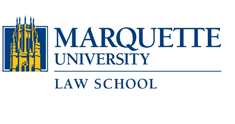Abstract
Using the Catholic Bishops’ litigation strategy in challenging the Affordable Care Act as an example, this Article suggests that the Supreme Court’s interpretation of the First Amendment religion clauses has emboldened religious organizations to seek preferred treatment, i.e., “to become a law unto [themselves].” The religion clauses have a common goal, religious freedom, but they are often in tension and require a delicate balance. Beginning with the Rehnquist Court, and continuing with the Roberts Court, the interpretation of the religion clauses, in combination with the free speech clause, has eliminated the wall of separation between religion and government. The wall has been replaced by an open border. As a result, government is heavily involved in subsidizing religion and religion is heavily involved in utilizing the government subsidy while attempting to exempt itself from government rules with which it disagrees.
Well-funded religious institutions and their advocacy groups, operating under the banner of religious freedom, are doing exactly what was forecast by the Court in Reynolds nearly 140 years ago—seeking to exempt themselves from religion-neutral laws of general applicability. The Catholic Bishops and their allied religious institutions want to, for example, become large employers in the public square but not abide by the rules that govern other public square employers. They want to be free to discriminate, particularly based on gender; they want to enlist the help of government in enforcing their doctrines on others who do not agree with those doctrines. In short, they seek a specific religious preference based on the Constitution and laws that are designed to promote broad religious freedom.
Repository Citation
Ivan E. Bodensteiner,
Are Catholic Bishops Seeking a Religious Preference or Religious Freedom?,
97 Marq. L. Rev. 947
(2014).
Available at: https://scholarship.law.marquette.edu/mulr/vol97/iss4/5
